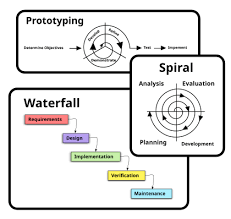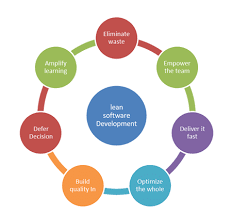The Essence of What Software Engineering Is: A Comprehensive Overview
The Essence of Software Engineering
Software engineering is a discipline that involves the application of engineering principles to the design, development, maintenance, testing, and evaluation of software and systems. It encompasses a systematic and disciplined approach to software development that aims to produce high-quality, reliable, and efficient software products.
Key Aspects of Software Engineering
Software engineering is a multifaceted field that covers various aspects of the software development lifecycle. Some key aspects include:
- Requirements Engineering: Understanding and defining the needs and specifications of the software system.
- Design: Creating a blueprint or plan for the software solution based on the requirements.
- Implementation: Writing code and translating the design into a working software product.
- Testing: Verifying that the software meets its requirements and functions correctly.
- Maintenance: Making modifications, updates, and improvements to the software over its lifecycle.
The Importance of Software Engineering
Effective software engineering practices are crucial for developing reliable and scalable software systems. By following established methodologies and best practices, software engineers can mitigate risks, reduce errors, and deliver solutions that meet user needs and expectations. Good software engineering also promotes collaboration, communication, and efficiency within development teams.
Career Opportunities in Software Engineering
The field of software engineering offers diverse career opportunities for individuals with a passion for technology and problem-solving. Software engineers can specialize in areas such as web development, mobile app development, cybersecurity, artificial intelligence, and more. With the increasing demand for skilled professionals in the tech industry, pursuing a career in software engineering can lead to rewarding job prospects and continuous learning opportunities.
In conclusion, software engineering plays a vital role in shaping our digital world by enabling the creation of innovative solutions that drive progress across industries. Embracing sound engineering principles and practices helps ensure the success of software projects and contributes to building robust and sustainable technology ecosystems.
8 Essential Tips for Effective Software Engineering
- Always write clean and readable code.
- Use version control systems like Git to track changes in your codebase.
- Write unit tests to ensure the reliability of your code.
- Follow coding standards and best practices in the industry.
- Document your code properly for easier maintenance by yourself and others.
- Regularly refactor your code to keep it efficient and maintainable.
- Stay updated with new technologies and trends in software engineering.
- Collaborate effectively with team members through clear communication and regular feedback.
Always write clean and readable code.
It is essential in software engineering to always prioritize writing clean and readable code. Clear and well-structured code not only enhances the understandability of the software but also facilitates easier maintenance, debugging, and collaboration among developers. By adhering to best practices and maintaining a consistent coding style, software engineers can ensure that their code is more efficient, less error-prone, and easier to scale and maintain in the long run. Investing time in crafting clean code upfront pays off by improving overall software quality and fostering a positive development environment.
Use version control systems like Git to track changes in your codebase.
Utilizing version control systems like Git is essential in software engineering to effectively track changes in your codebase. By leveraging Git’s capabilities, developers can maintain a detailed history of modifications, collaborate seamlessly with team members, and revert to previous versions if needed. This practice not only enhances code management but also promotes transparency, accountability, and overall efficiency in the development process.
Write unit tests to ensure the reliability of your code.
To ensure the reliability of your code, it is essential to write unit tests. Unit tests are small, focused tests that validate the individual components or units of your codebase. By writing unit tests, developers can verify that each piece of code functions as intended and continues to work correctly even after future changes or updates. This practice not only helps in identifying and fixing bugs early in the development process but also contributes to building a more robust and stable software system overall.
Follow coding standards and best practices in the industry.
Adhering to coding standards and best practices in the software engineering industry is essential for producing high-quality and maintainable code. By following established guidelines and conventions, developers can ensure consistency, readability, and scalability in their codebase. This approach not only streamlines collaboration within development teams but also helps reduce errors, improve code efficiency, and enhance overall software reliability. Embracing coding standards and best practices demonstrates a commitment to professionalism and excellence in software development, ultimately leading to more robust and sustainable software solutions.
Document your code properly for easier maintenance by yourself and others.
Properly documenting your code is a fundamental practice in software engineering that significantly aids in easier maintenance by both yourself and others. Clear and concise documentation serves as a roadmap for understanding the functionality, structure, and purpose of the codebase. It not only facilitates troubleshooting and debugging but also enhances collaboration among team members by ensuring that everyone can grasp the code logic efficiently. By investing time in documenting your code, you not only streamline future maintenance tasks but also contribute to the overall readability and sustainability of the software project.
Regularly refactor your code to keep it efficient and maintainable.
Regularly refactoring your code is a crucial practice in software engineering to ensure that your code remains efficient and maintainable over time. By continuously improving the structure and design of your codebase, you can enhance its readability, performance, and scalability. Refactoring allows you to eliminate technical debt, reduce complexity, and adapt to changing requirements more effectively. It is a proactive approach that promotes code quality and sustainability, ultimately leading to a more robust and resilient software system.
Stay updated with new technologies and trends in software engineering.
It is essential for software engineers to stay updated with new technologies and trends in software engineering. By keeping abreast of the latest advancements in the field, professionals can enhance their skills, expand their knowledge base, and remain competitive in the ever-evolving tech industry. Embracing new technologies allows software engineers to explore innovative solutions, improve efficiency in development processes, and deliver cutting-edge products that meet the demands of today’s digital landscape. Continuous learning and adaptation to emerging trends are key factors in staying relevant and ensuring success in the dynamic world of software engineering.
Collaborate effectively with team members through clear communication and regular feedback.
Collaborating effectively with team members in software engineering is essential for the success of any project. Clear communication and regular feedback help ensure that everyone is on the same page, working towards common goals, and addressing any issues or concerns promptly. By fostering a culture of open communication and constructive feedback, software engineering teams can enhance productivity, creativity, and overall project outcomes. Effective collaboration not only improves the quality of the software being developed but also promotes a positive and supportive work environment where team members can thrive and contribute their best efforts.







